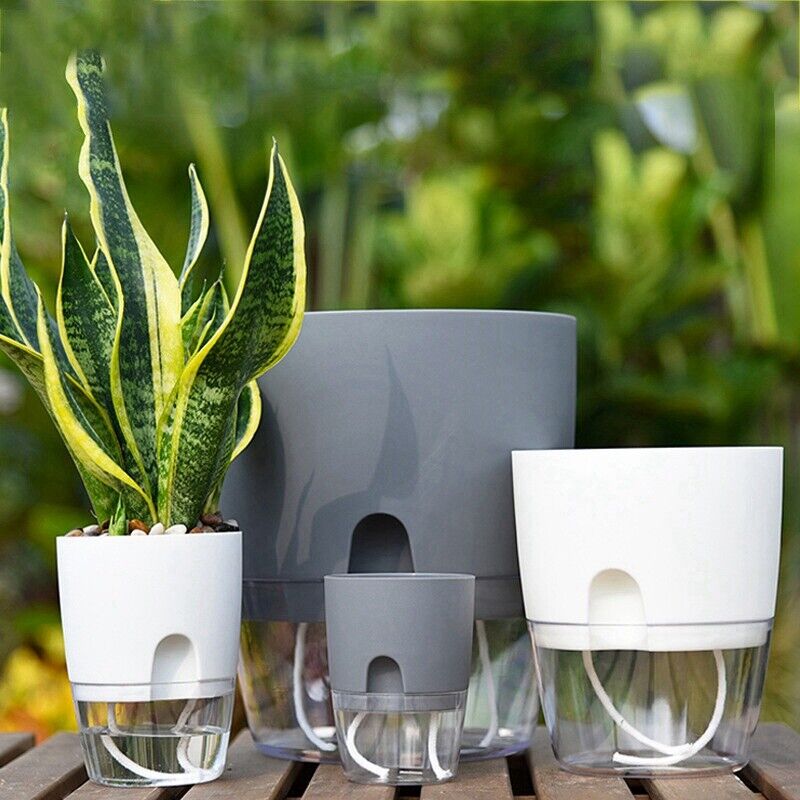Prime
Stylish self-watering planters

The simple design allows the plant to be the visual focal point, making it a great choice for eye-catching flowers. PHOTO/UNSPLASH.COM.
What you need to know:
Self-watering planters are great for people who are always forgetting to water their plants, but you cannot forget to keep the reservoir from emptying because it will cause the wicking system to dry out and it will not function when you refill the reservoir.
If the rate at which your plants die is making you feel as a serial plant killer, maybe it is time to invest in a self-watering planter. Many novice plant owners cannot seem to get what their plant need to survive; they end up either overwatering or starving the plant. This intelligent watering system was designed for such plant owners and others with hectic schedules that do not leave them enough time to care for their plants. The self-watering planter allows plants to receive just the right amount of water and nutrients they need. In addition, these planters are designed to blend in with most interior décor themes.
How do they work?
Planters are made of a growing bed, potting soil, water reservoir and wicking system. They work through capillary action this means that as the plant roots absorb water, the soil absorbs up more, maintaining a consistent level of moisture in the soil.
Most planters come with a plastic, inner liner that separates the potting mix and plant from the water at the planter’s base. This keeps the plant’s roots out of the water, while still remaining properly irrigated. How often you water depends on the type of planter and the plant but the period ranges between two to three weeks.
Options
If you are a beginner, it is advisable to choose a self-watering planter is straightforward and easy-to-use. It’s simply a tray with small porous channels that separates the base of the pot from the potting mix. These channels are filled with soil and act as wicks, bringing the water up to the roots.
With this self-watering design, you water from the top, and extra water collects at the planter’s base for future use. And your plant will also receive the necessary oxygen circulation it needs for its roots to thrive. Gardening portal bhg.com urges consumers to prioritise aesthetics, while ensuring they are buying the right size planter for their needs.
“For example, indoor plants tend to need smaller planters. Most of the best self-watering planters are designed with oxygen circulation to the roots in mind. The outside material should also be fairly porous (usually ceramic or plastic) in order to help facilitation the flow of air. We also like that the simple design allows the plant to be the visual focal point, making it a great choice for eye-catching flowers,” the portal notes.
Maintenance
While self-watering pots are very easy to maintain, there are a few things you need to do to help ensure that your plants are getting the water and nutrients they need.
If you are using a hydroponic soilless medium in your self-watering pot, then you will usually need to add nutrients to the water reservoir, regularly maintain this nutrient solution at the proper levels, and flush the growing medium out with fresh water every couple of weeks to avoid the toxic buildup of fertiliser salts.
However, many gardeners prefer to avoid using liquid fertilisers and time-release fertilisers with self-watering pots to prevent salt buildup and instead feed their plants with compost. Flushing out self-watering pots can be tricky with indoor pots that have no overflow outlet. Be sure include some well-aged sterile compost in your potting soil, and repot with a fresh batch of potting mix each planting season.
According to smartgardenguide.com, if you are using commercial self-watering potting mixture rather than creating your own, the best way to fertilise is to sprinkle a little slow-release fertiliser over the top of the soil before putting your plants in. This allows the fertiliser to slowly make its way down through the growing bed as the plants grow.
Self-watering planters are great for people who are always forgetting to water their plants, but you cannot forget to keep the reservoir from emptying because it will cause the wicking system to dry out and it will not function when you refill the reservoir.
If you do happen to allow the reservoir to dry out, you will need to water from the top, soaking the soil well to ensure that it, along with the wicking system at the bottom of the pot, gets the moisture needed to start carrying out capillary action once again.
For a self-watering planters to function properly, it is essential that you use the right potting soil. You can purchase commercial potting soils that are formulated specifically for self-watering planters. Or, make your own potting mixture with equal parts peat moss, coconut coir, perlite, and good-quality compost.
Self-watering planters are ideal for a variety of indoor and outdoor plants such as pothos, monstera, snake plants, African violets, Maranta, Hostas, and Peace lilies. They will also enable your herbs such as rosemary, basil, sage, and thyme flourish as long as you water them properly. You can also grow vegetables such as carrots, garlic, cabbage and cucumbers effortlessly in your self-watering pots.
Price
Because of the added features, self-watering planters are more costly than the average planters. You can find them at major supermarkets or order from online shops such as Amazon, Alibaba and Etsy, among others. Price ranges between Shs40,000 andShs1.6m depending on the size and material of the planter.




